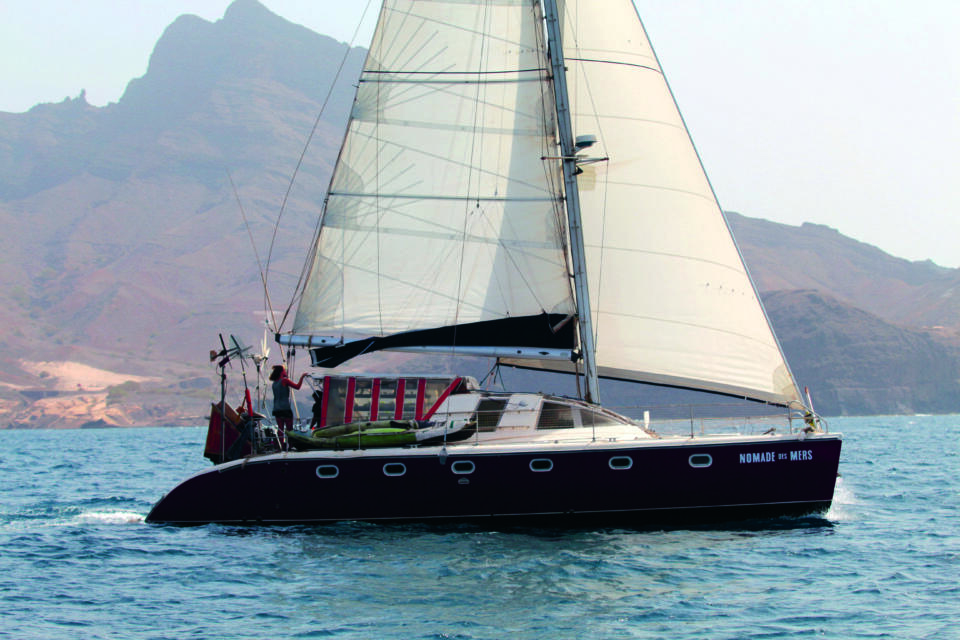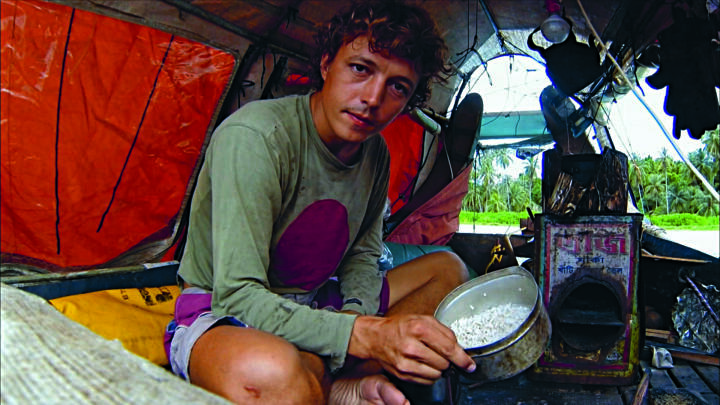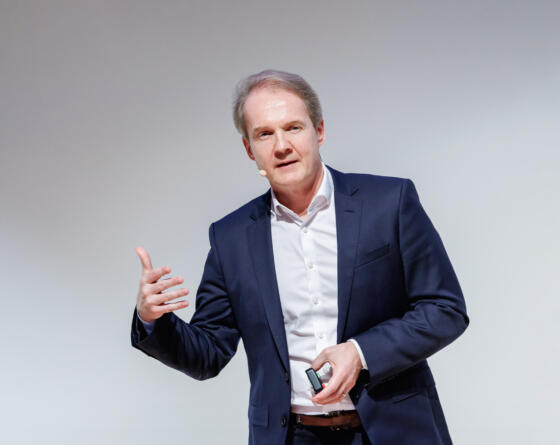
Setting a course for “simply ingenious”!
The cherry red catamaran is rocking gently in the dark blue sea. Towering behind a gradually clearing wall of fog are the “fire mountains” of the Cape Verde Islands, mammoth massifs of volcanic origin in front of Africa’s north-western coast. Corentin and his crew are overwhelmed – and dead tired at the same time. The stormy passage from Senegal nearly took them to their limits. “Miserable” is how they all felt, relates the sailing adventurer. Three days on the high seas, with lashing spray and heavy swell. And what for? Sailing just for kicks? Far from it!

Corentin de Chatelperron – a man with curly hair and a warm smile, who appears to be a lot younger than his 38 years of age – is a skipper and navigator merely in a secondary role. The engineer’s primary passion is tinkering. Since 2016, he’s been sailing from continent to continent with changing crews, setting course for simplest inventions that could be used to fight poverty in the world – if only they were more widely known. Corentin and his like-minded sailing companions are on a mission: they want to find, try out, refine and spread solutions for a self-sufficient way of life that are technically simple and, for that very reason, efficient and sustainable. “For us, this is not about inventing something new, but about documenting and adapting previously proven solutions,” says the world traveler.
The solar-powered seawater salt remover
Hydroponics
In pursuit of self-sufficient onshore and offshore living
Such solutions that are easy to create and easy to repair are referred to as low tech. The “survival tinkerer” and his team track them down and test them all over the world. Corentin shares each of his discoveries with others on an online platform for the low-tech community (www.lowtechlab.org).

His high-seas Kennex 445 catamaran named “Nomade des Mers” (French for “Ocean Nomade”) is a floating laboratory, the foreship is a greenhouse, four chickens lay eggs in a cage at the boat’s stern and one of the cabins is home to an insect farm supplying the crew with necessary proteins. “In Thailand, we met someone who helped us create a miniature mushroom cultivation, enabling us to harvest up to twelve kilograms (26 pounds) per month. I could hardly wait to make an omelet using the eggs from our chickens, with mushrooms, insects … and a little arugula,” recalls the ingenious engineer.
The Frenchman’s big mission began more than ten years ago at a shipyard in Bangladesh, where he came up with the idea of using jute and resin as basic materials for ship hulls. It resulted in an initial boat using natural fibers. He replaced glass fiber by grass stalks, a natural local resource. Shortly afterwards, the “Gold of Bengal,” the prototype of a sailboat constructed exclusively of a jute fiber composite, was afloat and Corentin de Chatelperron set sail for an expedition back to France – in constant pursuit of a self-sufficient existence. In the greenhouse below the deck, he cultivated vegetables using the Sun as an energy source. But a long period of time would pass before everything worked out. “My plants were withering away. And then, while gathering wood on remote islands, I brought termites into the boat that attacked my bamboo mast, so it broke down in the first storm. I, who had already seen myself as a modern Robinson Crusoe, soon felt like a stray of the seas,” says Corentin, describing his beginnings. With the benefit of these experiences from the class of “constructive failures,” he continued his journey on board of the catamaran, accompanied by a crew, in 2016 – albeit this time around the world.
Spreading knowledge gained
By that time, they’d long become a focus of media attention. In his native France, the sailor and his companions are celebrated as environmental heroes. In exhibitions and road shows, in appearances at special events and with massive media presence, they’re spreading their ideas for climate and environmental protection and for energy transition. Corentin de Chatelperron is fascinated by the low-tech design philosophy and has implemented a wealth of clever ideas on board of the exhibition boat. For instance, the crew managed to employ a special seawater salt removal system to obtain drinking water, to use a solar stove and to produce energy by means of a do-it-yourself wind turbine (see examples). The young explorers have also tried out alternative forms of nutrition such as cultivating edible algae. Numerous stops, encounters, adventures and inventions have marked the crew’s journey.
The reed bed for wastewater treatment
The plastic pyrolysis
They impart the knowledge they’ve gained to others: by the personal example they’re setting as well as by sharing tips – not only on their journey, but also by teaming up with NGOs that in turn offer assistance in capacity building to refugee camps, regions in crisis or poverty-stricken parts of the world, for example.
The 20-watt wind turbine
The solar-powered drying
After more than five years and more than 50 documented low-tech solutions, the exploratory journey will be ending this summer for the time being. The team of its “low-tech lab” announced that the “Nomade des Mers” is going to return to Concarneau, its home port in France. On board of the boat will be a huge bag filled to the brim with know-how intended to enable fighting some of the poverty in the world.
More about Corentin’s low-tech adventure
The Franco-German TV channel arte accompanied Corentin de Chatelperron and his crew. Several parts of the series titled “Mit Kompass und Köpfchen auf hoher See” can be found in arte’s media library.
Countless DIY tips can be watched on the low-tech lab’s YouTube channel.








